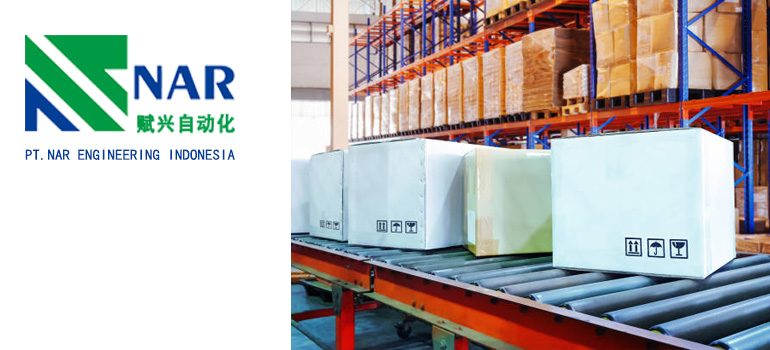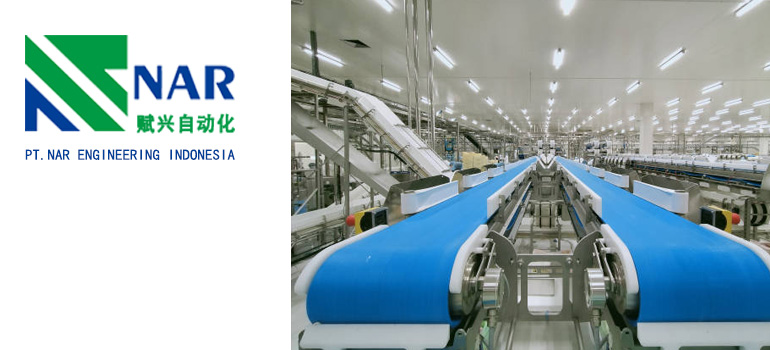Summary:
Purchasing Guide and Practical Tips for Belt System Accessories
What are belt system accessories and their role in conveyor systems
Types and Categories of Belt System Accessories
Factors to Consider When Choosing Belt System Accessories
Selection Guide for Belt System Accessories
Practical Tips for Implementation and Maintenance
What are belt system accessories and their role in conveyor systems?
Belt system accessories are essential components that complement conveyor systems, enhancing their functionality and performance in various industrial applications. These accessories play critical roles in ensuring smooth operation, improving efficiency, and reducing downtime. Here’s an overview of some common belt system accessories and their roles:
Rollers and Idlers:
Role: Support the conveyor belt, guiding it along the conveyor structure.
Function: Reduce friction between the belt and supporting surfaces, minimizing wear and extending belt life. They also help maintain proper tension and alignment of the belt.
Cleaners:
Role: Remove material residue and debris from the belt surface.
Function: Prevent buildup that can cause belt slippage, reduce cleaning maintenance, and improve overall conveyor efficiency.
Tracking Devices:
Role: Ensure the conveyor belt stays centered on the conveyor structure.
Function: Automatically adjust the position of the belt to prevent misalignment, which can lead to edge damage and premature wear.
Scrapers:
Role: Clean the underside of the conveyor belt.
Function: Remove carryback material that adheres to the belt surface, improving cleanliness and preventing material buildup on idlers and rollers.
Impact Beds and Skirting:
Role: Provide support and containment at transfer points.
Function: Absorb impact forces from falling material and prevent spillage, protecting the belt and surrounding equipment.
Pulleys:
Role: Redirect the belt around a conveyor’s path.
Function: Provide driving force and tension to the belt, facilitating movement along the conveyor system.
Belt Fasteners:
Role: Secure the ends of conveyor belts together.
Function: Maintain belt integrity and prevent material spillage or belt separation during operation.
Each of these accessories contributes to the efficient and reliable operation of conveyor systems by addressing specific challenges such as material carryback, belt misalignment, and maintenance requirements. By selecting and maintaining the right accessories, operators can optimize conveyor performance, minimize downtime, and reduce operating costs in industrial and logistical settings.
Types and Categories of Belt System Accessories

Types and categories of belt system accessories vary widely based on their specific functions and applications within conveyor systems. Here’s a breakdown of some common types:
Rollers and Idlers:
Type: Impact rollers, troughing idlers, return idlers.
Role: Support and guide the conveyor belt, reducing friction and wear.
Cleaners:
Type: Primary cleaners, secondary cleaners, belt scrapers.
Role: Remove material residue and debris from the belt surface to prevent buildup and improve cleanliness.
Tracking Devices:
Type: Belt trackers, alignment systems.
Role: Ensure the conveyor belt stays centered on the conveyor structure to prevent misalignment.
Skirting and Sealing Systems:
Type: Skirting rubber, conveyor belt sealing systems.
Role: Contain material on the conveyor belt, preventing spillage and enhancing safety.
Impact Beds and Bars:
Type: Impact beds, impact bars.
Role: Absorb impact forces from falling material at transfer points, protecting the belt and conveyor components.
Pulleys and Pulley Lagging:
Type: Drive pulleys, tail pulleys, ceramic lagging.
Role: Provide driving force and tension to the belt, facilitating movement along the conveyor system.
Belt Fasteners and Splicing Materials:
Type: Mechanical fasteners, vulcanized splices, belt repair materials.
Role: Secure the ends of conveyor belts together, maintaining belt integrity and preventing material spillage.
Load Zone Solutions:
Type: Impact cradles, belt support systems.
Role: Support the conveyor belt at loading points, reducing impact and abrasion on the belt.
Safety Accessories:
Type: Belt alignment switches, pull cord switches.
Role: Provide safety measures to stop the conveyor belt in emergencies or abnormal situations.
Miscellaneous Accessories:
Type: Belt covers, belt wipers, wear liners.
Role: Enhance belt protection, reduce maintenance needs, and improve overall conveyor performance.
These types and categories of belt system accessories cater to various operational needs such as improving efficiency, reducing maintenance downtime, enhancing safety, and prolonging conveyor belt life in industrial applications. Choosing the right accessories depends on factors like conveyor type, material handling requirements, and environmental conditions to optimize conveyor system performance effectively.
Factors to Consider When Choosing Belt System Accessories
When selecting belt system accessories for conveyor systems, several key factors should be carefully considered to ensure optimal performance, reliability, and cost-effectiveness. Here are important factors to keep in mind:
Performance Requirements
Operational Demands: Assess the specific operational needs of your conveyor system, including load capacity, speed requirements, and material characteristics.
Example: Choose rollers and idlers rated for the expected load capacity to minimize wear and maintain smooth operation.
Compatibility and Integration
System Compatibility: Ensure that the accessories are compatible with existing conveyor components and systems.
Example: Select tracking devices that seamlessly integrate with the conveyor structure to prevent misalignment issues.
Durability and Reliability
Material Quality: Opt for accessories made from durable materials that can withstand harsh operating conditions and frequent use.
Example: Use high-quality cleaners and scrapers resistant to wear and corrosion to maintain effective cleaning over time.
Maintenance Requirements
Ease of Maintenance: Consider the ease of maintenance and accessibility of components to minimize downtime and reduce maintenance costs.
Example: Choose belt fasteners that are easy to install and replace, reducing the need for frequent maintenance shutdowns.
Environmental Factors
Environmental Conditions: Evaluate the impact of environmental factors such as temperature variations, humidity, and exposure to chemicals or abrasive materials.
Example: Select pulley lagging materials that resist abrasion and provide adequate grip, even in wet or oily conditions.
Cost Considerations
Initial Investment vs. Long-Term Costs: Balance initial costs with long-term benefits and cost savings from improved efficiency and reduced downtime.
Example: Invest in high-quality impact beds and bars to minimize belt and component wear, thus reducing overall maintenance and replacement costs.
Safety and Compliance
Safety Standards: Ensure that accessories meet safety regulations and standards to protect personnel and comply with industry guidelines.
Example: Install safety switches and guards to prevent unauthorized access and stop the conveyor in emergencies.
Technical Support and Service
Vendor Support: Choose suppliers that offer reliable technical support, spare parts availability, and responsive customer service.
Example: Establish a partnership with a vendor who provides training on proper installation and maintenance of accessories.
Considering these factors when selecting belt system accessories ensures that your conveyor system operates efficiently, reliably, and safely, meeting the specific needs of your industrial operations while optimizing overall performance and longevity.
Selection Guide for Belt System Accessories
Certainly! Here’s a structured selection guide for choosing belt system accessories, focusing on optimizing conveyor system performance and efficiency:
Key Features and Specifications
Understanding Essential Features:
Durability: Choose accessories made from robust materials to withstand wear and tear.
Compatibility: Ensure accessories are compatible with your conveyor system’s specifications and requirements.
Performance Metrics: Evaluate accessories based on factors like load capacity, speed, and material handling capabilities.
Specifications Matching Operational Needs:
Material Type: Select accessories appropriate for the type of materials being transported (e.g., heavy-duty rollers for abrasive materials).
Environmental Conditions: Consider accessories that can endure environmental factors such as temperature extremes, moisture, and chemical exposure.
Comparative Analysis of Top Accessories
Reviewing Popular Options:
Performance Reviews: Research and compare user reviews and industry feedback on different accessories.
Case Studies: Explore case studies or examples of successful implementations to gauge performance in real-world applications.
Strengths and Weaknesses Assessment:
Reliability: Assess each accessory’s reliability in terms of reducing downtime and maintenance needs.
Efficiency: Evaluate how each accessory contributes to operational efficiency and productivity gains.
Vendor Evaluation and Selection
Criteria for Choosing Reliable Suppliers:
Quality Assurance: Ensure suppliers adhere to quality standards and certifications.
Technical Support: Evaluate vendor’s technical expertise and support capabilities.
Availability of Spare Parts: Confirm availability of spare parts and timely delivery for maintenance and repairs.
Practical Tips for Implementation and Maintenance
Installation Guidelines:
Proper Installation: Follow manufacturer guidelines for correct installation of accessories to ensure optimal performance.
Training: Provide training for staff on installation procedures and safety measures.
Maintenance Considerations:
Routine Inspections: Establish a schedule for routine inspections to detect and address potential issues early.
Predictive Maintenance: Implement predictive maintenance techniques to anticipate and prevent equipment failures.
Future Trends and Innovations
Emerging Technologies:
Smart Solutions: Explore advancements in smart technologies for monitoring and optimizing accessory performance.
Sustainability: Consider eco-friendly options and accessories designed for energy efficiency and reduced environmental impact.
By following this selection guide, you can make informed decisions when choosing belt system accessories, ensuring they meet your operational needs, enhance conveyor system performance, and contribute to overall efficiency and reliability in industrial applications.
Practical Tips for Implementation and Maintenance
Certainly! Here are practical tips for the implementation and maintenance of belt system accessories to ensure optimal performance and longevity:
Practical Tips for Implementation
Follow Manufacturer Guidelines:
Always adhere to the manufacturer’s installation instructions and recommendations for each accessory.
Proper installation ensures functionality and prevents premature wear or damage.
Ensure Compatibility:
Verify that the accessories are compatible with your specific conveyor system model and design.
Check dimensions, load capacities, and operational requirements to avoid compatibility issues.
Quality Assurance:
Prioritize accessories made from high-quality materials that meet industry standards for durability and performance.
Quality components reduce the risk of breakdowns and extend the lifespan of your conveyor system.
Safety First:
Implement safety protocols during installation to protect workers and prevent accidents.
Use appropriate personal protective equipment (PPE) and follow lockout/tagout procedures as needed.
Testing and Calibration:
Conduct thorough testing and calibration of accessories after installation to ensure they operate as expected.
Adjust settings or alignments as necessary to optimize performance and minimize operational issues.
Practical Tips for Maintenance
Establish a Maintenance Schedule:
Develop a regular maintenance schedule for inspecting and servicing belt system accessories.
Schedule routine checks based on manufacturer recommendations and operational demands.
Inspect Regularly:
Perform visual inspections of accessories for signs of wear, damage, or misalignment.
Check for loose fasteners, worn components, or abnormal vibrations that may indicate issues.
Clean and Lubricate:
Keep accessories clean from debris and contaminants that could affect performance.
Lubricate moving parts as recommended to reduce friction and wear, enhancing longevity.
Replace Worn Parts Promptly:
Replace worn-out components such as rollers, scrapers, or belts promptly to prevent further damage to the conveyor system.
Use genuine replacement parts to maintain compatibility and reliability.
Implement Predictive Maintenance:
Utilize predictive maintenance techniques such as vibration analysis or thermal imaging to detect potential problems before they escalate.
Monitor performance metrics and trends to identify early signs of degradation or failure.
Training and Documentation:
Provide training to maintenance personnel on proper inspection, maintenance procedures, and safety protocols.
Maintain detailed records of maintenance activities, repairs, and replacements for reference and audit purposes.
By implementing these practical tips for both implementation and maintenance of belt system accessories, you can optimize the performance, reliability, and lifespan of your conveyor system while minimizing downtime and operational disruptions.

